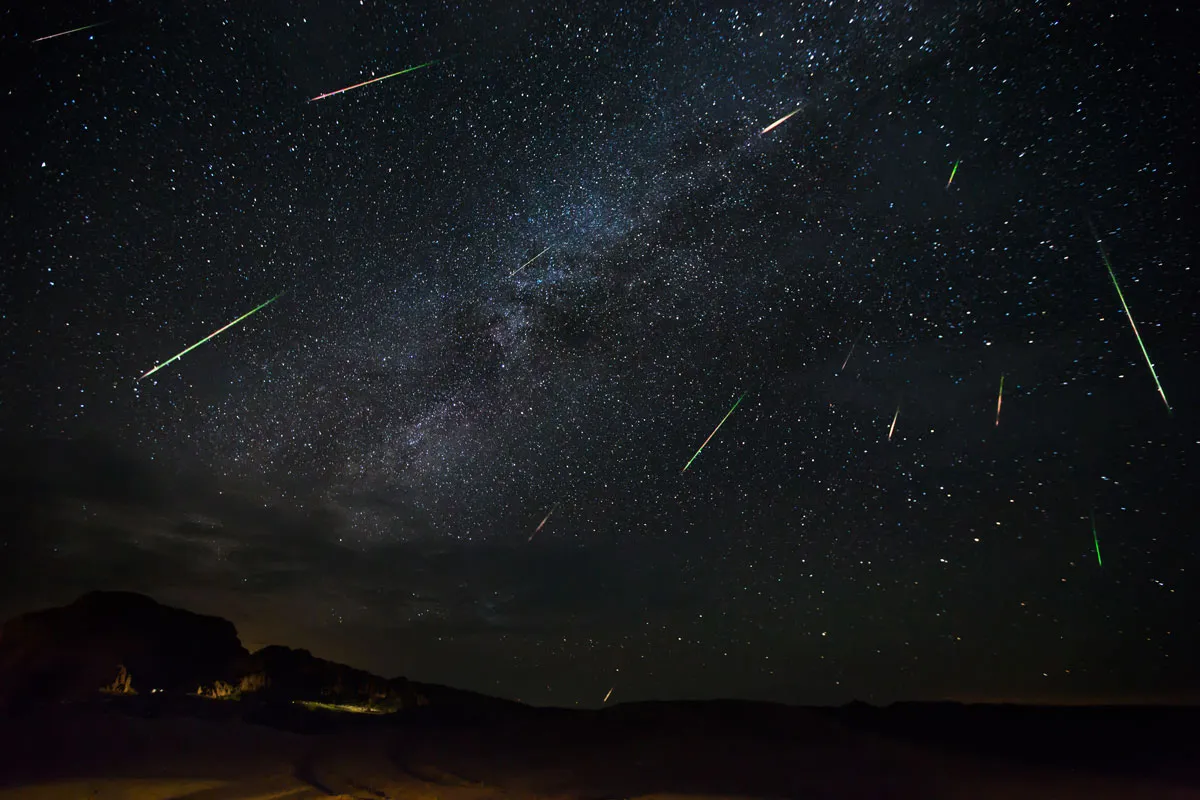This is not a drill: the Perseid Meteor Shower will soon hit its peak, weeks after it first became visible in the night sky.
For those in the UK, it won’t be a celestial spectacle to miss: the Perseid (‘Per-see-id’) meteor shower is one of the most active in the northern hemisphere, with stargazers expecting to witness up to 150 shooting stars per hour.
But when is the best time to see the shower? Where should you be looking in the sky? And what actually is a meteor anyway?
To answer these questions and more, we’ve enlisted the help of Prof Michael Merrifield, an astronomer at the University of Nottingham.
Plus, if you’re looking for more stargazing tips, be sure to check out our astronomy for beginnersguide and ourfull Moon UKcalendar.
When can you see the Perseid meteor shower 2021 in the UK?
The Perseid meteor shower 2021 will peak on 12-13 August for those in the UK and around the northern hemisphere.
The meteors can be seen at any time of night, but the darker it is, the better your chances, so aim for between midnight and 5am.
Don’t worry if you miss this peak: you may be able to spot some meteors from the shower anytime up to 23 August.
How many meteors will I be able to see in the UK?
On the peak of the Perseids on 12-13 August, you may be able to see up to an astonishing 150 meteors per hour – at least, provided the sky is clear.
“[The meteors] will vary a lot in brightness. There are very bright ones and very faint ones,” says Merrifield. “You will see some from the middle of a city. But obviously you'll see many more if you go somewhere darker.”
How can I see thePerseid meteor shower 2021?
All shooting stars in meteor showers generally originate from one point, what’s known as the radiant. And the radiant for the Perseids is in the constellation of Perseus, which appears in the northern sky during the evening.
If you want to find this point exactly, we recommend using a stargazing app such as SkyView Lite (free on AndroidandAppledevices).
However, you don’t need to locate Perseus to see shooting stars. “You just need to be looking in a northerly direction," says Merrifield. “Perseus will be the point where [meteors] all seem to come from, but they'll spread out across the night sky."

He adds: “Although it looks like the shooting stars are flying into the atmosphere, what's really happening is that the Earth is ploughing into the dirt as it goes around in its orbit of the Sun.
“That essentially means the meteors that splatter against the Earth will all be coming from the same direction. It's just like when you're driving along in a car, you get more bugs on the front windscreen than the back.”
When viewing a meteor shower, it’s essential that you let your eyes adjust to the darkness beforehand. This means keeping your eyes away from any bright light for at least 20 minutes. You can resist looking at your phone for that long, right?
What equipment do I need to see the meteor shower?
"You need no special equipment at all. The last thing you want is a telescope for this, because actually they spread out all across the sky," says Merrifield."Telescopes are very good for looking at very small bit of the sky, but not good for trying to pick up what's happening across a wide field of view.
"From my perspective, the two key pieces of observing equipment for observing meteor showers is a deck chair – because you want to have a comfortable place to sit – and, if it's cold, a duvet."
Luckily, since the Perseids fall in the middle of August, it shouldn't be too cold, making it one of the best meteor showers to watch all year.
"The best thing about [the Perseids] is that it's warm out there," says Merrifield. "One of my favourite experiences of observing the Perseids was when I was on holiday in Cornwall, and in the cottage we were renting, we had a hot tub. Lying outside in the hot tub, watching shooting stars go past, it was the best experience of seeing shooting stars."
What actually is a meteor shower?
A meteor shower occurs when Earth collides with space debris – mostly pieces of ice and sand-like material – from a comet or asteroid.
While normally only the size of a grain of sand, the debris generates bright streaks in the sky by travelling at extremely high speeds (up to 66km/s – several times faster than a speeding bullet).
“What you see is that final flurry as a [piece of debris] burns up in Earth’s atmosphere into nothing,” explains Merrifield.
The debris that hits Earth during the Perseids is believed to have originated from a comet called Swift–Tuttle. With a diameter of 26km, Swift–Tuttle takes 133 years to orbit the Sun.
Read more:
- UK scientists recover pieces of unique meteorite that fell from fireball
- How can we tell that a meteorite has come from a particular planet?
About our expert, Prof Michael Merrifield
Michael is a professor of astronomy at the University of Nottingham. He studies the formation and structure of galaxies, cosmology, and X-ray and gamma astronomy.
